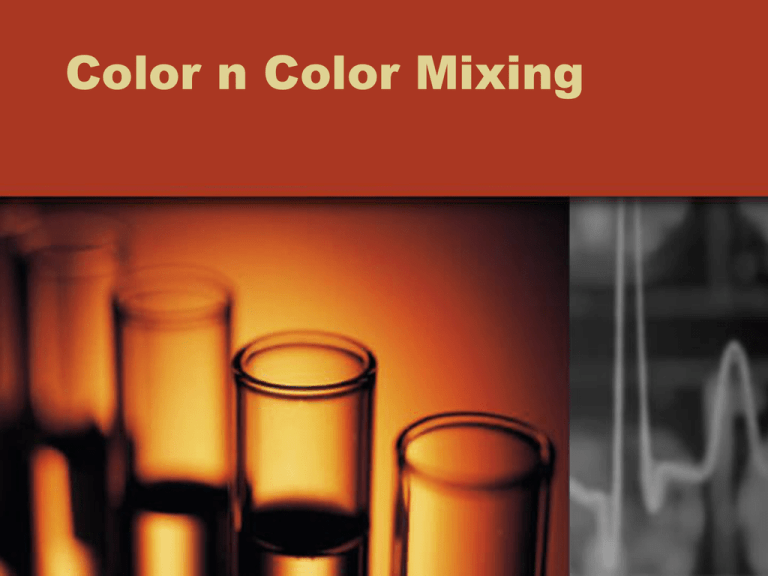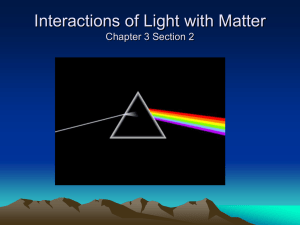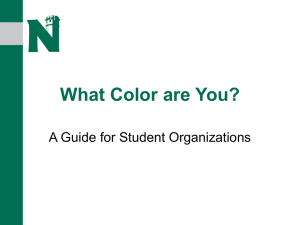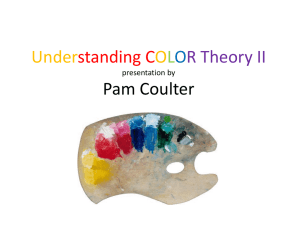File
advertisement

Color n Color Mixing Chapter 22 Section 4 Light and Color Bellringer What is your favorite color? In a short paragraph, explain why you like your favorite color. Also, explain how certain colors affect your mood. Write your paragraph in your science journal. Chapter 22 Section 4 Light and Color Objectives • Name and describe three ways light interacts with matter. • Explain how the color of an object is determined. • Explain why mixing colors of light is called color addition. • Describe why mixing colors of pigment is called color subtraction. Color Section 4 Light and Color Light and Matter • When light strikes any form of matter, it can be reflected, absorbed, or transmitted. • Reflection happens when light bounces off an object. • Absorption is the transfer of light energy to matter. • Transmission is the passing of light through matter. Chapter 22 Section 4 Light and Color Light and Matter, continued • The image at right explains transmission, reflection, and absorption. Chapter 22 Section 4 Light and Color Light and Matter, continued • Transparent matter is matter though which light is easily transmitted. Glass is transparent. • Translucent matter transmits light but also scatters it. Frosted windows are translucent. • Opaque matter does not transmit any light. Computers and books are opaque. Chapter 22 Section 4 Light and Color Light and Matter, continued • The images below explain the difference between the terms transparent, translucent, and opaque. Chapter 22 Section 4 Light and Color Colors of Objects • Humans see different wavelengths of light as different colors. • The color that an object appears to be is determined by the wavelengths of light that reach your eyes. • Light reaches your eyes after being reflected off an object or after being transmitted through an object. Chapter 22 Section 4 Light and Color Colors of Objects, continued • Colors of Opaque Objects When white light strikes a colored opaque object, some colors of light are absorbed, and some are reflected. • Only the light that is reflected reaches your eyes and is detected. So, the colors of light that are reflected by an opaque object determine the color you see. Chapter 22 Section 4 Light and Color Colors of Objects, continued • Colors of Transparent and Translucent Objects Ordinary window glass is colorless in white light because it transmits all the colors of light that strike it. But some transparent objects are colored. • When you look through colored transparent or translucent objects, you see the color of light that was transmitted through the material. Chapter 22 Section 4 Light and Color Mixing Colors of Light • Red, blue, and green are the primary colors of light. These three colors can be combined in different ratios to produce white light and many colors of light. • Color Addition is combining colors of light. • Light and Color Television The colors on a color TV are produced by color addition of the primary colors of light. Chapter 22 Section 4 Light and Color Mixing Colors of Pigment • Pigments and Color A material that gives a substance its color by absorbing some colors of light and reflecting others is a pigment. • Color Subtraction When you mix pigments together, more colors of light are absorbed or taken away. So, mixing pigments is called color subtraction. • Yellow, cyan, and magenta are the primary pigments. Chapter 22 Section 4 Light and Color








